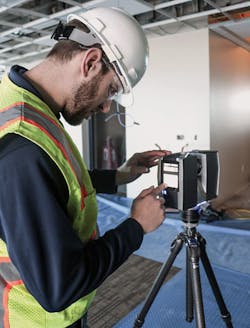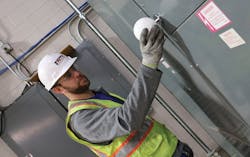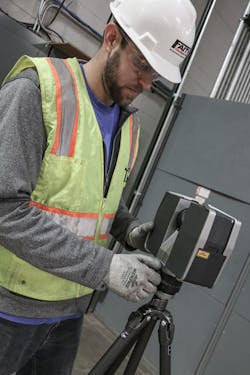One of the final phases of the construction process is to provide plans that exhibit the “as-built” conditions. These plans are meant to provide dimensionally accurate information in relation to final installed locations of the complete building components. These documents are often marked up on the construction site from the original engineered drawings, which do not pick up every change-order or modified field change. This creates an “as-built” plan that doesn’t accurately represent complete information.
When future renovation work on these construction sites takes place, everyone will refer to the “as-built” documents as a starting point to determine the existing conditions. When the starting point is not completely accurate, this phase of construction compounds the errors of future construction. One of the most common methods for verifying existing conditions is to compare the “as-built” documents from the previous construction with a site walkthrough; another is to use total stations. However, even with this accurate and quick technology, you can only gather a sampling of data to verify against the current documents. This has opened the door for a new technology: 3D scanning or “LIDAR.”
Formerly popular in civil projects, this process has become more accurate and affordable, allowing 3D scanning to reach construction in the building sector. Faith Technologies is an early adopter of 3D scanning, and the advanced technology plays a key role in its commitment to excellence.
This new technology uses a laser to target a distance that is reflected back to provide a series of points in the XYZ coordinate system and ultimately represented in a “point cloud.” Once a point cloud is created, you can compare it against drawings and models for validation or discrepancies between the “as-built” documents and the “as-is” 3D scan.
As accuracy improves and costs decrease, you can use this same technology for the construction review process (QA/QC), allowing for as-built conditions to be accurately created and maintained. This can happen multiple times during construction to gather as-installed content that can be brought back into the model. With multiple scans, you can record areas that will soon be concealed within the walls, floors, and ceilings.
Faith Technologies uses a 3D scanner to accomplish all of the tasks mentioned above for its own use as well as for trade partners — and it continues to find other uses to drive a faster and more accurate construction site for customers.
Marsden is director of virtual construction at Faith Technologies, Menasha, Wis. He is responsible for developing, implementing, and evaluating technological tools, practices, and procedures across the organization, and can be reached at [email protected].



